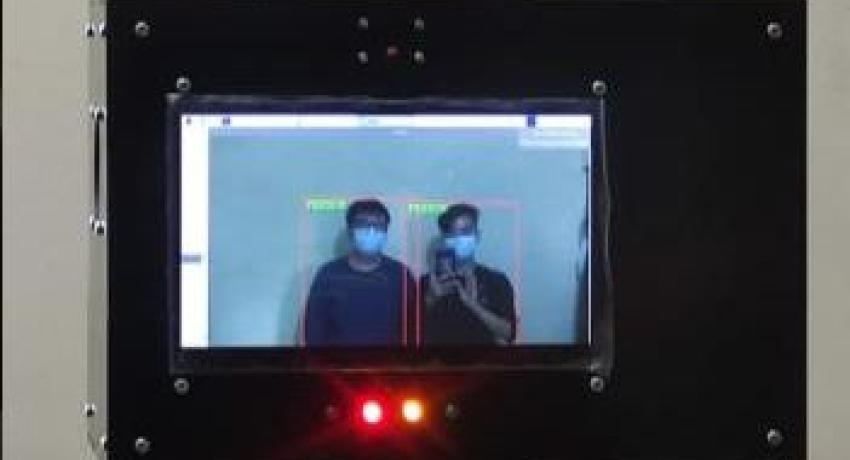The covid-19 pandemic has forced us to adopt a new normal. One of the new normals is the implementation of physical distancing. Everyone must keep their distance to avoid transmission of the covid-19 virus from droplets that come out when coughing, sneezing, even when breathing and talking. Therefore, everyone should ideally maintain a distance of at least 1 meter when interacting with other people. To make physical distancing more effective, the UNY student team designed a Raspberry Pi-based warning tool for physical distancing violations to prevent the spread of COVID-19. The team consisting of Irwan Ardiansyah, Hilal Fahrul Hamam, Burhan Dwi Ardiansyah, Dira Tri Puspita and Nancy Febriani Taek.
According to Irwan Ardiansyah, this tool is designed to detect the distance between people who are within detection range through the Raspberry Pi Camera." The Raspberry Pi 3 Model B+ processes the image reading from the camera by measuring the distance between the detected people. If the distance is less than 1 meter, a warning will be issued in the form of a sound," he said. In addition, this tool can also count the number of people in a room within the detection range. If the number of people in the room exceeds the predetermined capacity on the tool, a warning will be issued in the form of sound. Hilal Fahrul Hamam added that this tool could also detect physical distancing violations in public facilities such as lobbies or classrooms.
Burhan Dwi Ardiansyah explained that acrylic was used for the design of the toolbox. "In the electronics section, we made a PCB shield to connect various electronic components consisting of 4 LED indicators as indicators of the tool's function, Touch Display, Raspberry Pi fan, and camera," said Burhan.
The team also ensured the installation of cables and the development of algorithms in stages to strengthen detection by Camera Raspberry Pi. The program is written directly on the Raspberry Pi 3 Model B+. It uses the Python programming language and the Open-Cv and Numpy libraries, where blue boxes indicate faces that are successfully detected. The program has also succeeded in detecting people. The detected person will appear in a green box accompanied by the caption 'Person'.
Dira Tri Puspita explained this tool works when the camera detects the presence of a person or human within its reach, then LED indicator two will turn on, and the person's position is also visible on the screen and is indicated in a green box with the caption 'Person'. If no humans are detected within the range, then LED indicator two will turn off. “When the tool is on, the indicator LED 1 will continuously be on and flashing for 1 second. Meanwhile, the initial position for other indicator LEDs, namely LED indicators 2,3, and 4, is off," said Dira. When the camera detects that two people are less than 1 meter away, the tool will see it as a Physical Distancing violation and issue a warning sound. LED indicator three will be on and flashing for 0.5 seconds continuously. On the Touch Display display the two people appear in a red box. The warning sound and LED indicator 3 will turn off when the two people have kept a safe distance and the display of the detected person on the touch display is again indicated in a green box. This is one of UNY's efforts in the sustainable development agenda in health and quality education.





